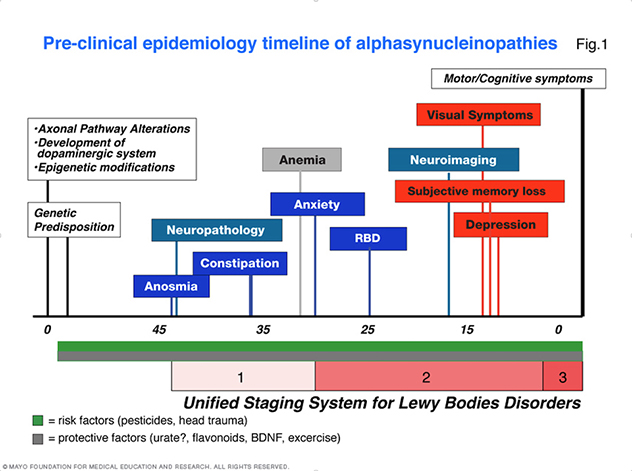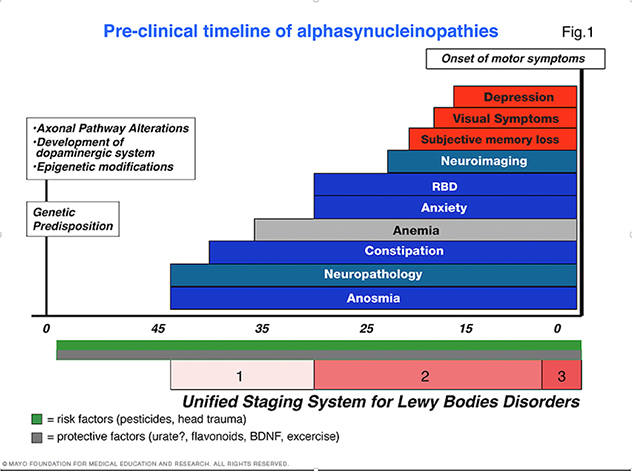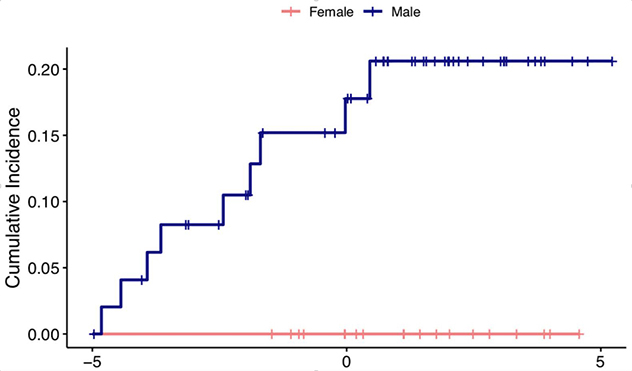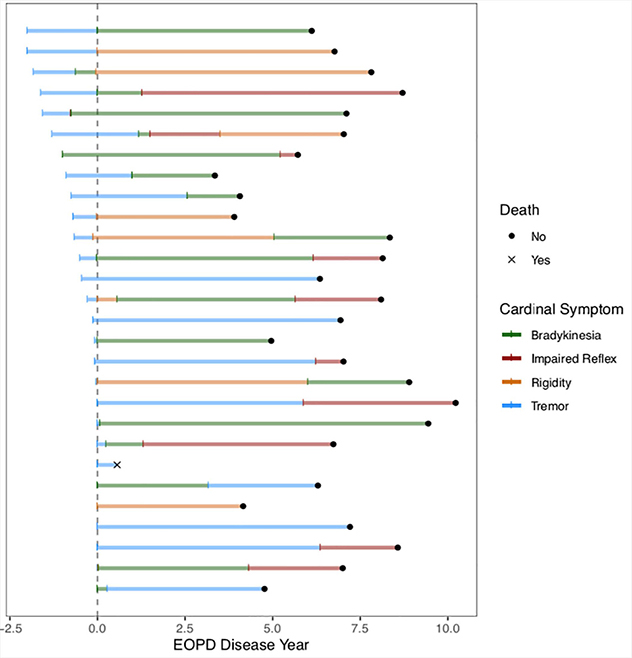Focus areas
The Early-Onset Parkinson's Disease and Synucleinopathies Lab at Mayo Clinic is breaking new ground in the study of early-onset Parkinson's disease and related neurodegenerative disorders through these focus areas:
Epidemiologic studies
These studies give insights into how common different synucleinopathies are. This helps researchers and healthcare professionals understand the impact of neurodegenerative disorders. Epidemiologic studies help determine if certain populations are at a higher risk of developing synucleinopathies and how environmental factors and genetic predisposition interplay in the population at risk.
Dr. Savica's lab has access to the Rochester Epidemiology Project, enabling extensive retrospective case-control studies, with the aim of finding early predictors of developing synucleinopathies. In addition, the lab is studying the frequency of Parkinson's disease, dementia with Lewy bodies and parkinsonism-related disorders in the population. They have found that these conditions have become more frequent in the last few decades.
 Clinical alphasynucleinopathies timeline
Clinical alphasynucleinopathies timeline
This figure shows the preclinical epidemiology factors of alphasynucleinopathies of neurodegeneration and the mechanisms that influence the staging system for Lewy body disorders.
 Clinical alphasynucleinopathies timeline
Clinical alphasynucleinopathies timeline
This figure shows the preclinical timeline for alphasynucleinopathies that influences the unified staging system for Lewy body disorders.
Biomarker identification
Biomarkers can be used to diagnose and prognosticate synucleinopathies and related disorders. Diagnostic and prognostic biomarkers are crucial for making medical decisions and choosing treatment and care for patients. In addition, biomarkers can be relevant in the early diagnosis and identification of people at risk.
Risk factor identification
The lab has identified novel risk factors and early manifestations, such as anemia and constipation, for the future development of Parkinson's disease diagnosis. The research team also is exploring the role of the different risk factors within sexes.
 Cumulative incidence
Cumulative incidence
This figure shows the cumulative incidence of mortality and sex difference among people ages 50 and younger who met criteria for parkinsonism. Source: Camerucci E, et al. Early-onset parkinsonism and early-onset Parkinson's disease: A population-based study (2010-2015). Journal of Parkinson's Disease. 2021; doi:10.3233/JPD-202464.
Disease progression
The lab developed a model of progression of disease, taking advantage of identified premotor symptoms and findings of early-onset Parkinson's disease and synucleinopathies.
 Patient symptom-onset timeline
Patient symptom-onset timeline
This graph shows patients' timelines of cardinal motor symptoms onset relative to early-onset Parkinson's disease diagnosis before 55 years of age. Source: Camerucci E, et al. Early-onset parkinsonism and early-onset Parkinson's disease: A population-based study (2010-2015). Journal of Parkinson's Disease. 2021; doi:10.3233/JPD-202464.
Visual symptoms and head trauma
The research team is exploring the role of visual symptoms and head trauma in predicting the progression of Parkinson's disease.